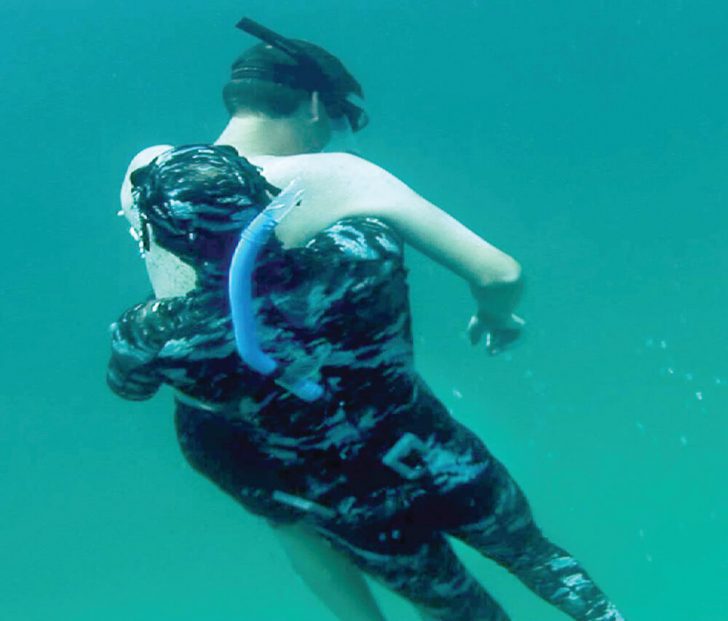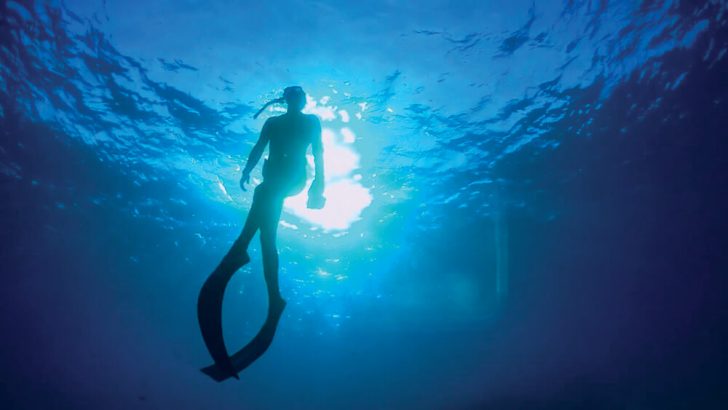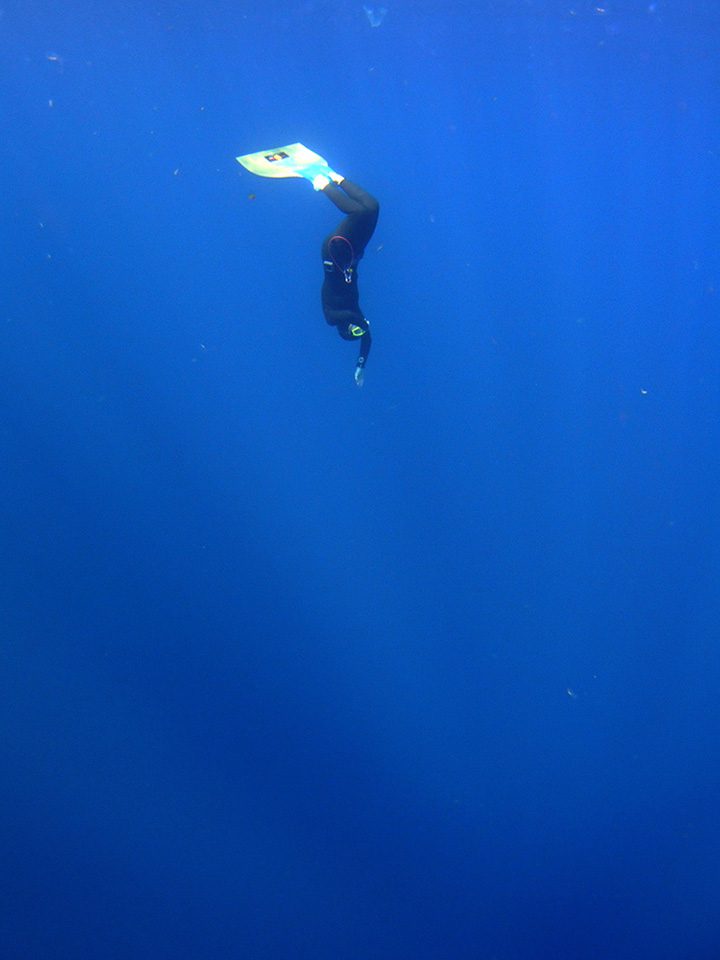By Julie Richardson
The first time I heard the term ‘shallow-water blackout’ my family had already been freediving and spearfishing for 24 years. My 19-year-old son Robert had taken a course and began describing this phenomenon of how a freediver could blackout while breath-hold diving. I waved my hand dismissively. “That happens to people who don’t know what they are doing,” I said. “We’re experienced.”
Three months later, I got schooled in just how wrong I was.
April 19, 2008, dawned with beautiful calm seas and clear skies—a spearfisherman’s dream. It was Robert’s 20th birthday, and he wanted to celebrate it by diving with his 16-year-old brother, David, and three other friends: Carson, 20; Nicky, 16; and Richard, 15, who were not experienced freedivers. The boys left early in the morning to freedive together, and we planned to join them in the afternoon with friends and family who were coming out with us on our larger boat.
After a successful dive of 50 feet, the boys decided to do a deeper dive. They put the anchor out in 92 feet of water, and Robert headed down first with David behind him. At the bottom, they both grabbed some sand before heading back up. Robert was 15 feet from the surface when he looked down at his brother and saw David motionless 30 feet below him. Robert swam down and grabbed his unconscious brother around the chest before heading for the surface. That’s the last thing Robert remembers.
Their friends on the boat suddenly noticed my sons’ bodies drifting face down in the current some 30 yards away. Carson dived off the boat and swam out to them with Nicky right behind him. They turned the boys over. My sons’ faces were blue with swollen purple lips and open staring eyes. The color of their eyes had faded. They were not breathing and were bleeding from the mouth. Their three traumatized friends—engulfed in a nightmare—worked together to bring them onboard and start CPR. And then I got the call.

“There’s been an accident.”
“Which one?” I asked as fear enveloped me.
“Both.”
I clung to the table. My heart felt like it was going to explode. I took deep breaths trying to ease the pain in my chest, but it didn’t work. I started praying, with Carson’s girlfriend, that my sons would be spared.
My husband Walter and I met the helicopter at the hospital. The boys’ arterial blood gases (oxygen levels) were so low—32 and 54 percent—the ER doctor did not believe the report and had it verbally repeated five times. The pulmonologist told us our sons’ lungs presented as drowning victims. Yet, after three days in ICU, Robert and David were sent home to finish healing. It was a miracle.
Soon after the accident, concerned freedive experts contacted me and encouraged me to use my story to make a difference. I felt a strong desire to respond, and so two months after the accident, I founded DiveWise to further freedive safety education.
Tracking fatality reports are vital in understanding how accidents happen and how we can prevent them. Divers Alert Network (DAN) maintains an online Breath-hold Incident Database, so divers can report fatal and non-fatal blackout events easily and anonymously. This can be accessed at DiveWise.org.
Through much effort and single-minded dedication, Terry Maas has given a gift to freedivers everywhere with his ingenious device, the Freediver Recovery Vest (FRV). This unit is designed, through the diver’s preset depth and time setting, to deliver a blackout victim to the surface face up. You can read more about it at oceanicss.com. My sons now wear the FRV when they freedive and spearfish.
There are other ways freedivers can mitigate the risk in this sport:
- Dive with an evenly matched partner and conform to the level of the least capable diver.
- Weight yourself correctly by being positively buoyant at the surface after a full exhalation.
- Do not hyperventilate to excess.
- Dive one up/one down maintaining constant visual contact.
- When conditions allow, each diver should have a dive flag; if a boat is involved a dive flag should be conspicuously displayed.
- Maintain close, direct supervision of a freediver for no less than 30 seconds after they surface, even if they have signaled “OK.”
- Make your minimum surface interval twice the duration of your dive time.
- Do not take every dive to its limit; maintain a reserve.
- Review, practice, and discuss how to recognize and handle blackouts and near blackouts.
Never before has more effort from more groups created a greater combined potential for saving lives in the sport of freediving and spearfishing. We are hopeful this will correspond to a lower fatality rate.
DiveWise isn’t my organization. It’s yours. We are here to serve the freediving community. Please help by donating online at our website (DiveWise is a 501 c(3) nonprofit organization) or by offering your suggestions on how we can better help the freediving community. We offer a big “thank you” to the organizations and individuals who have given generously these past nine years in support of our work. We couldn’t have done it without you.
Julie Richardson lives in Miami, Fla. with her husband and their three sons. She and her family are avid boaters and spearfishers. In 2010, Julie won the National Award from the Coast Guard funded National Water Safety Congress for her work in promoting water safety. To learn more visit DiveWise.org.


